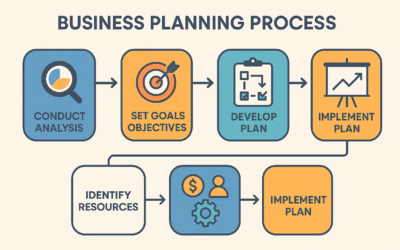Do you believe in magic? If you have ever seen the results of expert business analytics then maybe you do. This is because the effects of implementing business analytics processes in business can seem magical. However, these impressive results are due to the processes, techniques, and software that is used and not to the waving of a wand.
Although it has to be said that the insight and advice provided by business analytics experts, such as the team at Global Resources LLC, are equally as impressive as any magic spell. They are produced using the winning ingredients of experience, expertise and state-of-the-art tools. So how does the seemingly magical art of business analytics actually work and how does it help the wishes of business come true?
What is business analytics?
Let’s start by looking at what business analytics actually is, and why it’s less about magic than it is about skill and expertise. The basis of business analytics lies in investigating and exploring business performance and practices. This exploration helps to inform business planning and strategy going forward.
The investigative process involves the use of data and statistics. Consistent methods are used to measure past performance and assist in planning for the future of a business. During the analysis process, tools such as querying, reporting and Online Analytical Processing (OLAP) is used in order to answer questions about what is currently happening, what problems there are and what actions need to be taken.
How does the business analytics magic work?
While business analytics is technically not magical, it certainly feels that way. So, how does this happen?
Businesses use data analytics in order to make decisions that are based on data. This means that these businesses regard the data that they have as a valuable asset. In order for this asset to be used effectively, the business needs to be dedicated to making data-based decisions, the data needs to be high quality and the analyst needs to be an expert who is knowledgeable about the business. Generally, the analysis process follows a similar pattern.
- The goal of the business is determined.
- The methodology for the analysis is decided upon.
- Relevant data is collated, to be analyzed. This normally involves the analysis of a small sample set of data initially.
- Patterns and relationships are identified and questions are asked and answered until the needs of the business are met.
Different types of business analytics
There are different types of business analytics which can be used in various situations. These different types include:
- Descriptive analytics which helps with the tracking of performance against KPIs in order to understand the current situation within a business.
- Predictive analytics involves looking at data about trends in order to identify what is likely to happen.
- Prescriptive analytics uses data concerning past performance in order to help plan for future similar situations.
You can see that although business analytics are based on hard data, the results that can be achieved can seem like magic. Of course, this only happens when the data is of high quality, the business is committed to making data-driven changes and the data analyst is knowledgeable and experienced.

0 Comments